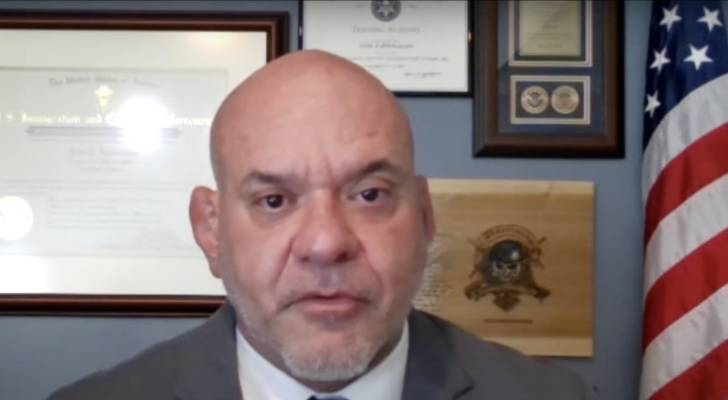The San Diego owner of this popular Asian grocery store is scrambling for alternatives to Chinese imports as a tariff loophole expires — here’s how grocers and consumers are feeling the pinch


Last year, more than 1.36 billion shipments entered the U.S. duty-free thanks to a long-standing trade exemption for low-value shipments of $800 or less. Not anymore. That exemption expired just as the Trump administration hiked tariffs on imports — including produce and other household staples. That leaves small businesses like San Diego’s Vien Dong Supermarket […]
Forget Florida — these two unexpected states are the new retirement hot spots, offering lower costs, tax perks and a better quality of life for retirees


Retirees are flocking to certain states in large numbers. While their motivations aren’t entirely clear, the growing cost of living — especially property taxes — is a likely factor. A John Burns Research and Consulting study ranked states based on their highest and lowest median property tax rates. While it can be tempting to save […]
I’m 36, with 2 kids, and in the middle of a divorce. I’m moving home to my parents’ for a bit to save money — and I want to invest at least $3.5K/month for my future. Where do I start?
As a 30-something, rebuilding your life post-divorce can feel daunting, especially if there are a couple of kids involved. However, if you’ve moved back in with your parents and you’re starting with no debt and a steady monthly savings goal of $3,500, you’re in an incredibly strong position. Don’t miss I’m 49 years old and […]
I’m 39 and saddled with $25K in student loan and credit card debt. The monthly payments are absolutely crushing me — I don’t even have any retirement savings. How do I manage this mess?


When most people are in their 30s, there’s a lot of pressure to be in good financial standing. But what if you’re $25,000 in debt from a mix of student loans and credit card balances, and you only make $4,000 a month? If those monthly payments are stretching you thin, that likely means you haven’t […]
I’m 31, make $117K/year, cover all household bills — yet my fiance refuses to chip in. Insists his cash is for ‘fun’ while I handle ‘responsibilities.’ Can I fix this before we get hitched?


For some, the road to marriage can look financially lopsided. Those in their 30s earning their fair share — say, more than $100,000 a year — may be used to covering 100% of their individual household expenses. However, it doesn’t typically feel good when a fiance refuses to contribute, claiming their money is only for […]
The FBI says an Arizona father–son duo scammed $280M — with an elaborate ‘lie’ meant to ‘exploit and defraud investors.’ Here’s how it allegedly happened, and how to avoid frauds like this


Arizona father and son, Randy and Chad Miller, have reportedly been indicted in an alleged scheme that targeted investors looking to fund a sports complex. The elaborate plot, which resulted in more than $280 million in defrauded funds, involved municipal bonds linked to a large sports complex in the city of Mesa. Don’t miss I’m […]
After the storm: How to financially weather home repairs and rising insurance costs


Some Florida homeowners hardest hit by hurricanes Milton and Helene must now also see their homes completely demolished or, if they’re lucky, elevated. This follows a federal mandate that impacts majorly damaged homes — those impacted by natural disasters. Federal Emergency Management Agency’s (FEMA) 50% rule dictates that if a house is in a flood […]
‘Pay close attention’: Suze Orman says many Americans underestimate this critical cost in retirement — 5 ways to prepare before it’s too late
For many retirees, budgeting becomes an art of precision — cutting travel, downsizing homes and seeking out seniors’ discounts. But there’s one expense that still manages to take a surprising toll, even for those who think they’ve planned their golden years well. Don’t miss I’m 49 years old and have nothing saved for retirement — […]
Colorado businesses facing $8 million in fines for employment law violations, including hiring unauthorized migrant workers — but here’s why undocumented workers are paying the highest price


Three Denver-area businesses face a combined $8 million in fines for allegedly employing unauthorized migrant workers in contravention of employment law. U.S. Immigration and Customs Enforcement (ICE) special agent Steve Cagen told Fox31 News that the fines are designed to uphold the law and “promote a culture of compliance." Don’t miss I’m 49 years old […]
This Chicago man did something wild when alleged squatters wouldn’t leave his home — he moved in with them. Here’s how his ‘nightmare’ unfolded and why you should never follow his lead


When Marco Velazquez, a Chicago homeowner, discovered squatters living in his South Side property, he didn’t leave. Instead, he stayed the night. “I couldn’t believe it,” Velazquez told ABC 7 News, after finding the home he was preparing to sell was already occupied. “It was like a nightmare.” Don’t miss I’m 49 years old and […]